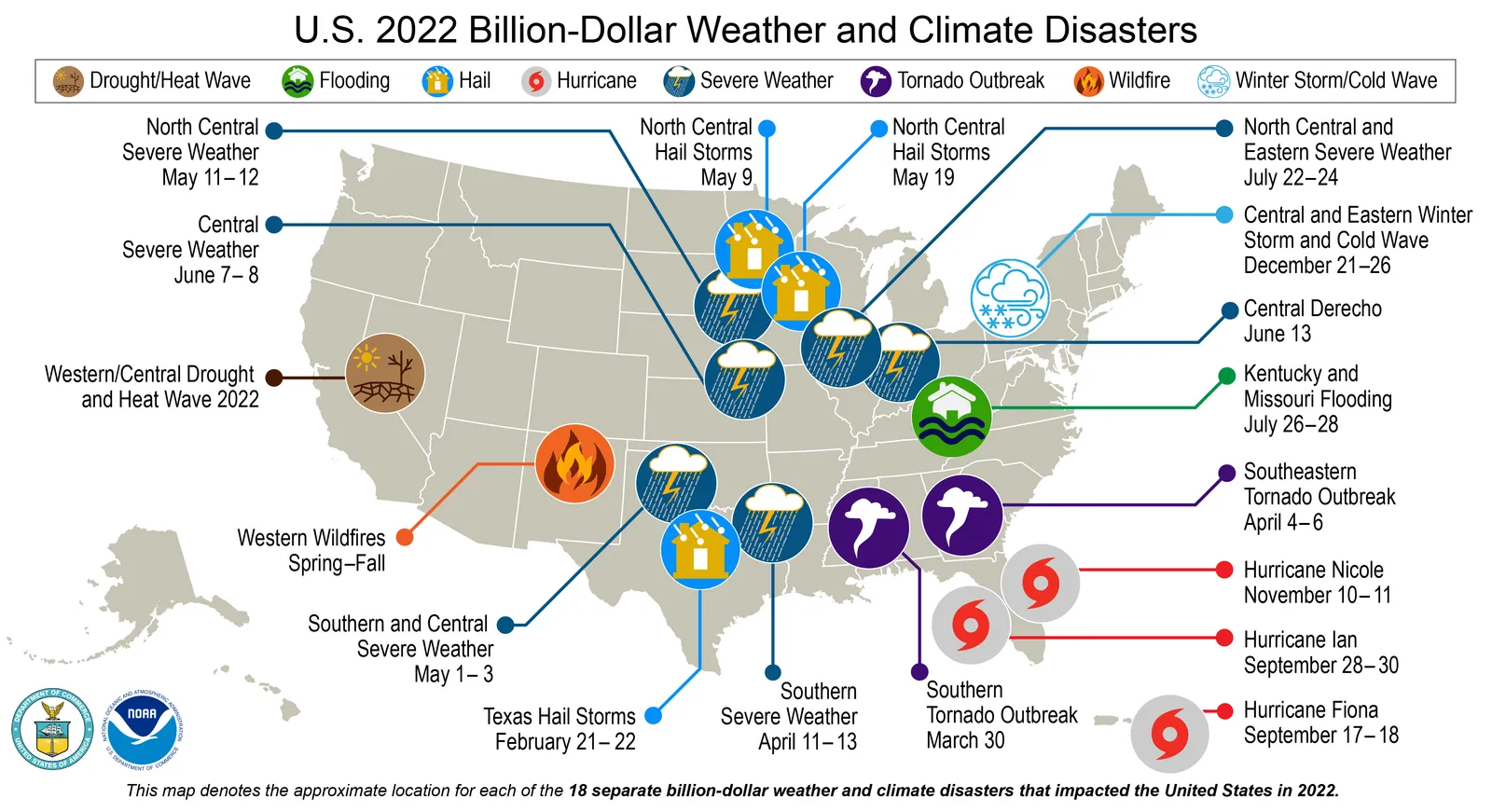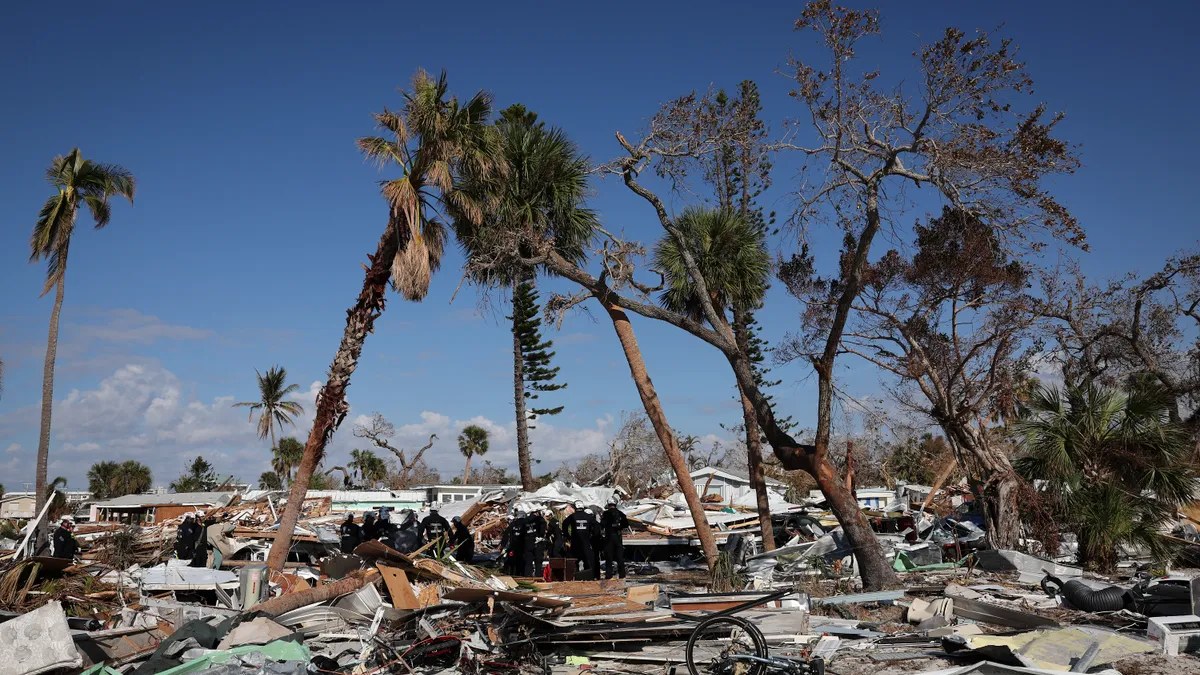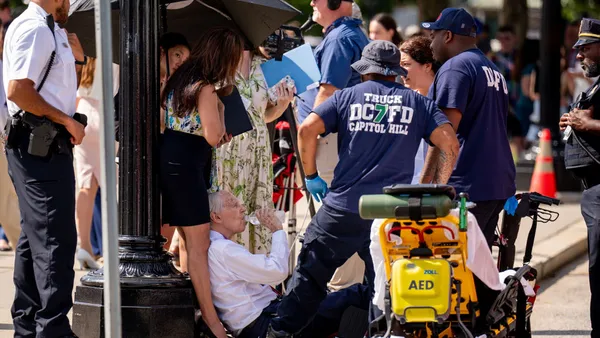There were 18 separate weather and climate disaster events with losses that exceeded $1 billion in the U.S. in 2022, the National Oceanic and Atmospheric Administration reported Tuesday. Those events were part of $165 billion in overall costs related to such weather events and climate disasters last year, making it the third costliest year on record.
Among the 18, 11 were severe storm events, and three were tropical cyclones. There was also flooding, wildfire, drought and a winter storm. These events resulted in the deaths of 474 people “and had significant economic effects on the areas impacted,” according to NOAA’s National Centers for Environmental Information.
The billion-dollar events have grown more common, NOAA reported. The annual average between 1980 and 2022 was 7.9 events. From 2018 to 2022, it was 17.8 events.

Costs factored into totals include those related to:
- wildfire suppression
- physical damage to buildings, roads, bridges, energy platforms, vehicles or agricultural assets
- and time element losses such as business interruption or loss of living quarters.
The cost totals don’t consider categories such as environmental degradation, related mental or physical healthcare costs, or supply chain or contingent business interruption. NOAA also noted limitations to interpreting the data, including the impact of inflation in comparing costs over time.
The Federal Emergency Management Agency — the entity tasked with responding to such events — has seen a portion of its budget allocated to proactive resilience investments. For example, funding has grown for the Building Resilient Infrastructure and Communities program to support local and state hazard mitigation projects. But it’s still a small fraction compared with the costs of disaster response. FEMA said this week that Hurricane Ian assistance has exceeded $4.5 billion.
Some cities are also trying to learn from those events. Buffalo, New York, which experienced a major snowstorm in December that was linked to dozens of deaths, is partnering with public policy and transportation researchers through New York University to analyze the response by public works and emergency personnel. “This storm was one of the strongest winter weather systems to ever hit a densely populated metropolis. With climate change and increasingly strong weather systems … We know this is not the last,” Mayor Byron Brown said last week.
These events affect everyone, regardless of where they live, said Katherine Hayhoe, chief scientist of The Nature Conservancy. “We can no longer view climate change as a distant issue –one that only matters to people in the future, or who live far away. Extreme weather events super-sized by climate change are flooding people’s homes, drying up their water supplies, devastating their food and threatening their lives,” Hayhoe said in a statement Tuesday responding to the report.
“What I hope people take away from NOAA’s report today is no matter who you are or where you live, climate change is already altering your day-to-day life, affecting the people, places and things you love. Critics often say climate solutions are too expensive. To me, $165 Billion underscores that it is too expensive not to fix it. Many climate solutions also make our cities cleaner, safer and more resilient; our food and water supply more secure; and our own lives healthier,” Hayhoe said.













